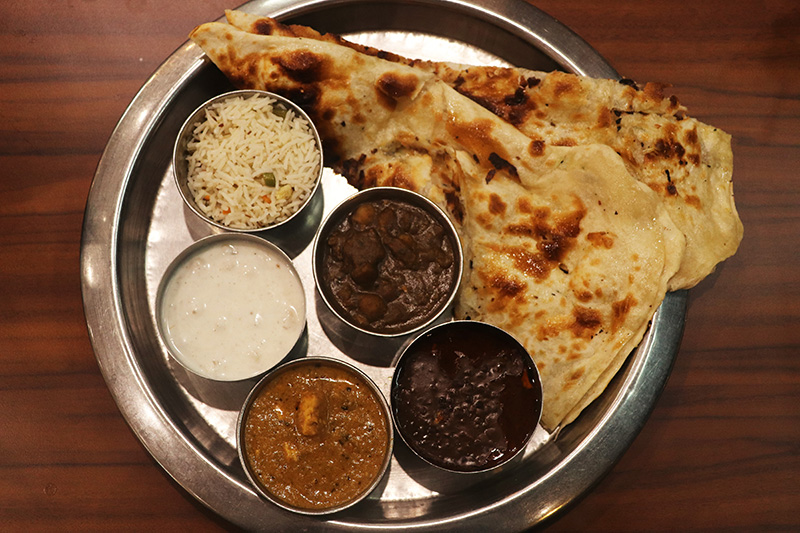THE HEART OF INDIA
Chapter 3: Punjabi cuisine

Perhaps you’ve never heard of this small State in North-West India, but you must have tasted or heard of one of its culinary specialities: chicken tikka masala, dal makhani, shahi paneer, lassi, emblematic India dishes, known the world over.
In this third chapter we take you off to Punjab: a rich territory about the size of Holland, bordering Pakistan, the land of Sikhs, whose age-old gastronomic traditions have travelled far afield to become the foreigners view of Indian cuisine.
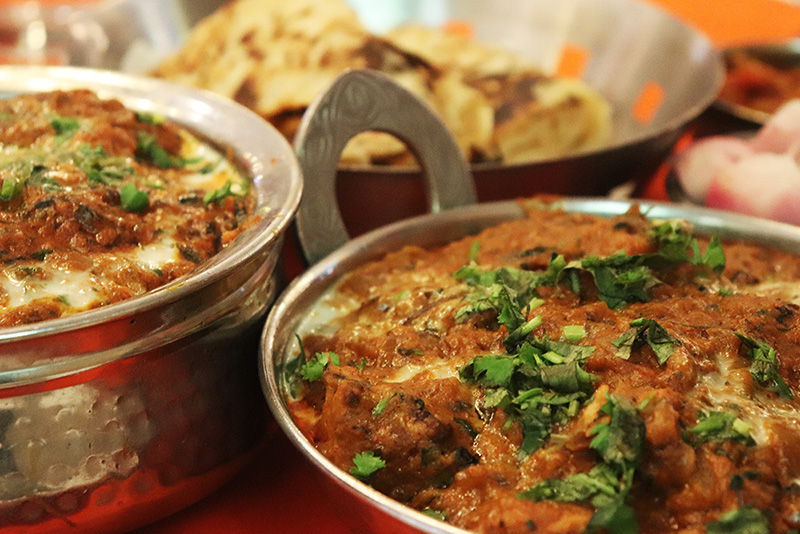
Originally, Punjab covered part of India and part of today’s Pakistan. Punjab is North of the Indus valley, one of the first cradles of civilisation with the Harappan Civilisation, which first appeared in 5000 B.C. The Harappan Civilisation developed agriculture and livestock farming, eating chick peas, lentils and dairy products due to the domestication of buffalos. These three foods are the basic ingredients of Punjabi cuisine; channa, dal and paneer.
Over the centuries, Punjab was occupied by many empires; Persian, Greek, Mughal, Afghan then British in chronological order. One of the most notable was the Persian occupation which brought with it the technique and the tradition of the Tandoor oven, together with the Mughals who introduced chicken and mutton dishes which are today so typical of the region.
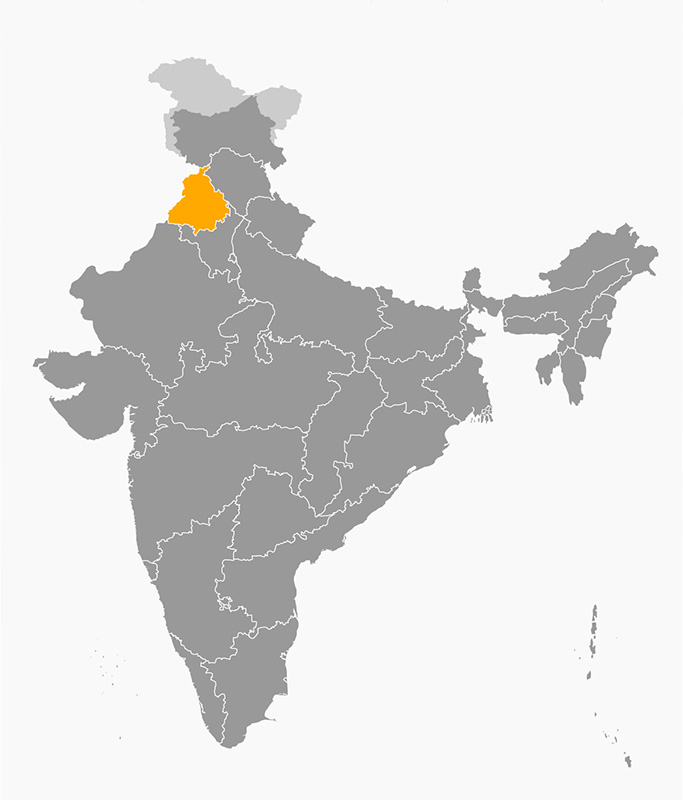
You can’t talk about Punjab without mentioning Sikhism, a religion founded in the 15th century by Guru Nanak. The majority of Punjabis are disciples of Nanak who was initially Hindu and whose best friend was Muslim. Nanak became exasperated with the way religions tore each other apart, whilst their sole aim should be to bring humanity together. So, he founded an order based on respect, tolerance, honesty, humility and peace.
“There is no Hindu and no Muslim. Only disciples (Sikhs in Punjabi)”– Guru Nanak.
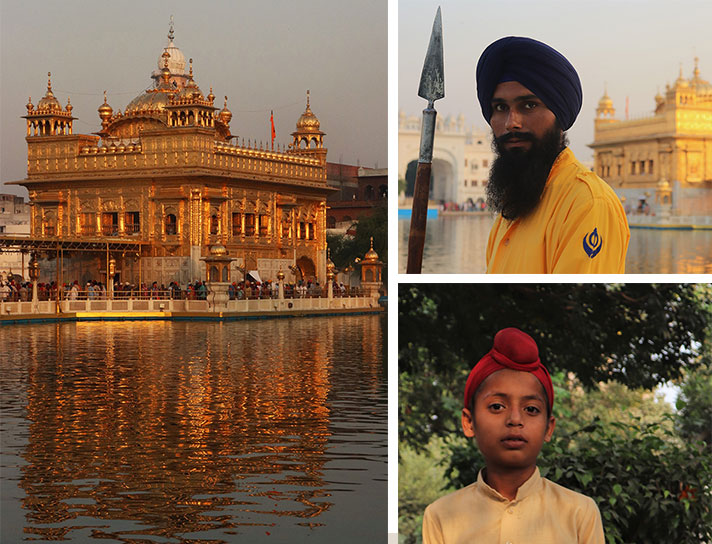
Despite these precepts, Punjab was the Indian state that was the most affected by partition in 1947 with the creation of the independent Muslim states of Pakistan. With 10 million people forced to leave their homes at partition, many Sikhs chose to emigrate. They took with them expertise, age-old gastronomic traditions, a wealth of spices and a sprinkle of magic. Although the origins of certain dishes remain unclear, the vast majority of Indian dishes known around the world are originally from Punjab.

“Masala, how can you describe this tasty and varied mix?”

Before we delve into the secrets of Punjabi cuisine, let’s take a closer at masala, an essential part of any Indian dish. Masala is a spice mix using up to 30 different spices! And no two are alike, every province, village and family has their very own recipe. We met Aruna in Bathinda, who told us that she never uses ginger in her masala because her father doesn’t like it… However, there are some spices that are virtually always used and masalas can be divided into two large categories: garam masala and garlic masala.
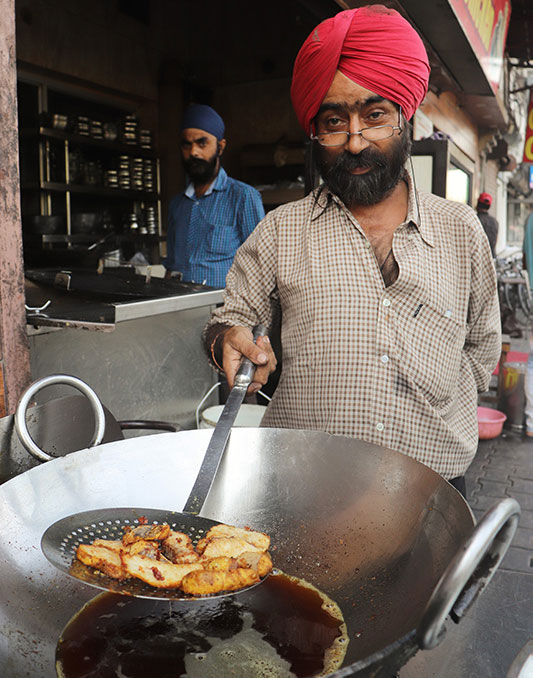
Garam in Hindi means “warm” and masala means “spice mix”. Garam masala is the name used for all mixes used on meat, vegetables and carbohydrates. Spices used include: pepper, cumin, coriander, cloves, cinnamon, fenugreek, bay leaf, fennel and green cardamom. Most restaurants use a simple garam masala with “only” 7 or 8 spices before adding specific spices depending on the dish.
The main ingredient of garlic masala, which is milder, is obviously garlic. By adding cumin, coriander, mustard seed, ginger, turmeric and a pinch of chilli pepper, you can create an excellent mix for fish and any tomato-based recipe. Aruna also told us that this mix is simply delicious with pumpkin… Ideal for your autumn and Halloween dishes!
“You don’t need a silver fork to eat good food”– Paul Prudhomme

During our two month trip around Indian, the best food we ate was in Punjabi dhabas (roadside cafés). These little restaurants all offer the same type of food: lentils, chick peas, buffalo paneer, chicken and mutton, each cooked with their own garam masala. These make delicious dishes served with chapatis, naans and paranthas to mop up the tasty sauce. These flatbreads can also be stuffed with cheese, potatoes or cauliflower.
The Tandoor oven, which gave its name to the famous tandoori chicken dish, is an essential tool in Punjabi cuisine. A fire is lit inside the clay oven, and its bell shape keeps the heat in, with temperatures reaching up to 500°C. The bread is stuck to the scorching hot sides of the oven, while mutton and chicken are placed in the centre using skewers. Certain dhabas leave their dishes to cook overnight in large pots placed directly on the oven, which has gone out but is still warm.


In short, Punjabi cuisine is the pillar of North-Indian cuisine, inherited from a great number of different influences. It’s hardly surprising then that this cuisine, which uses unique cooking techniques and ancestral spice mixes, has spread all over the world to become the hallmark of Indian cuisine.
How about making your very own Punjabi meal? Discover our recipes
 Français
Français 
